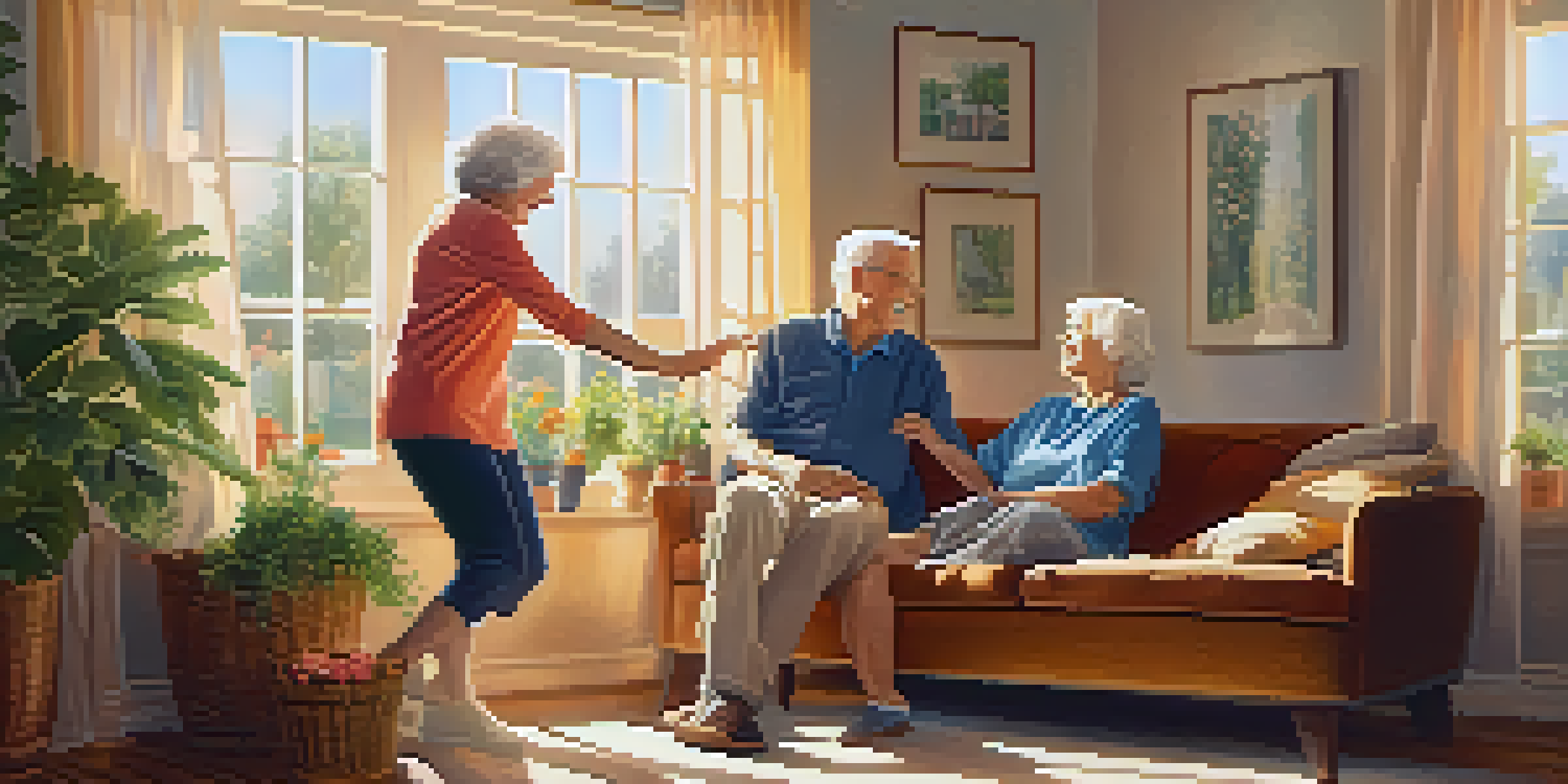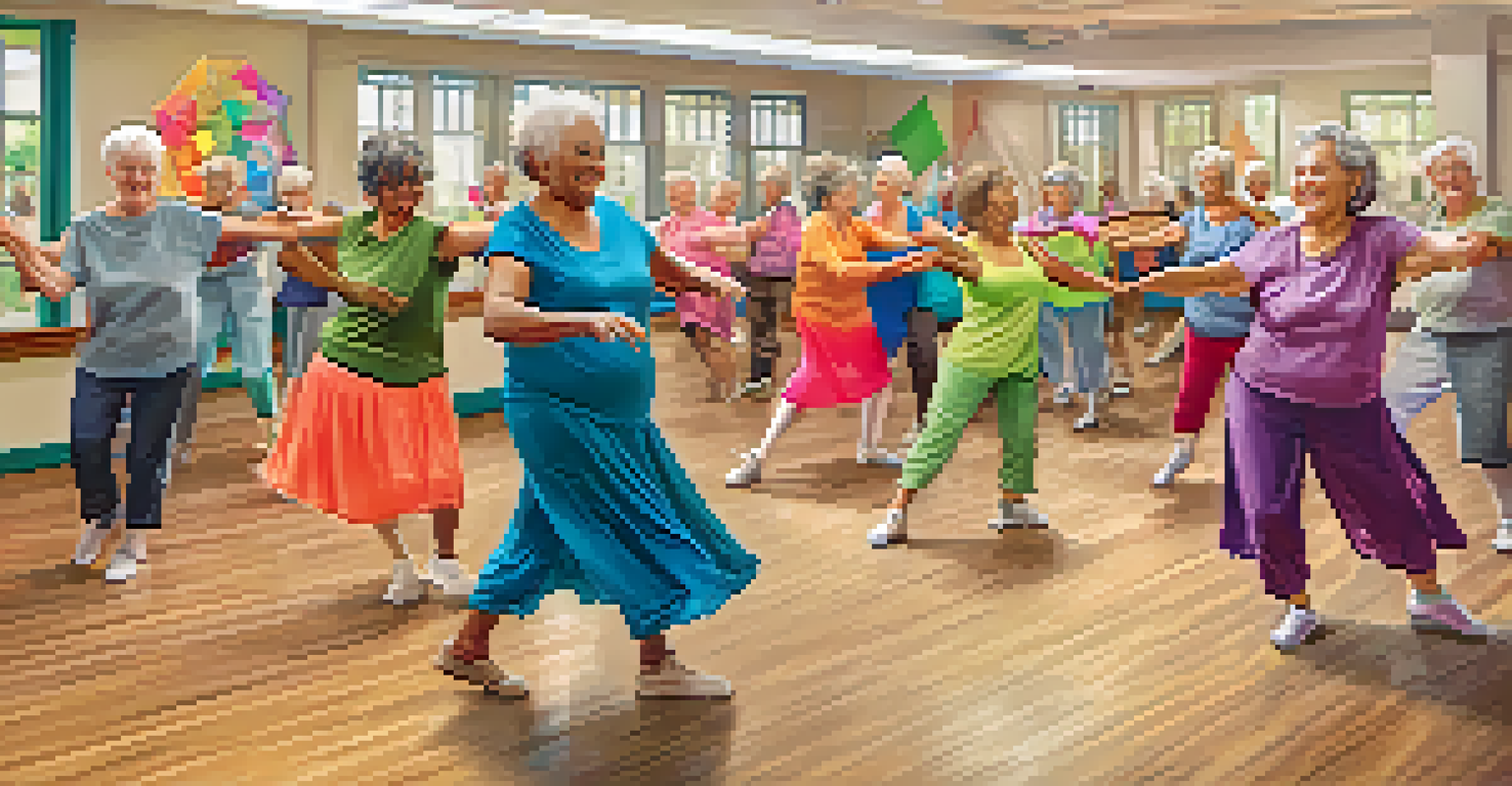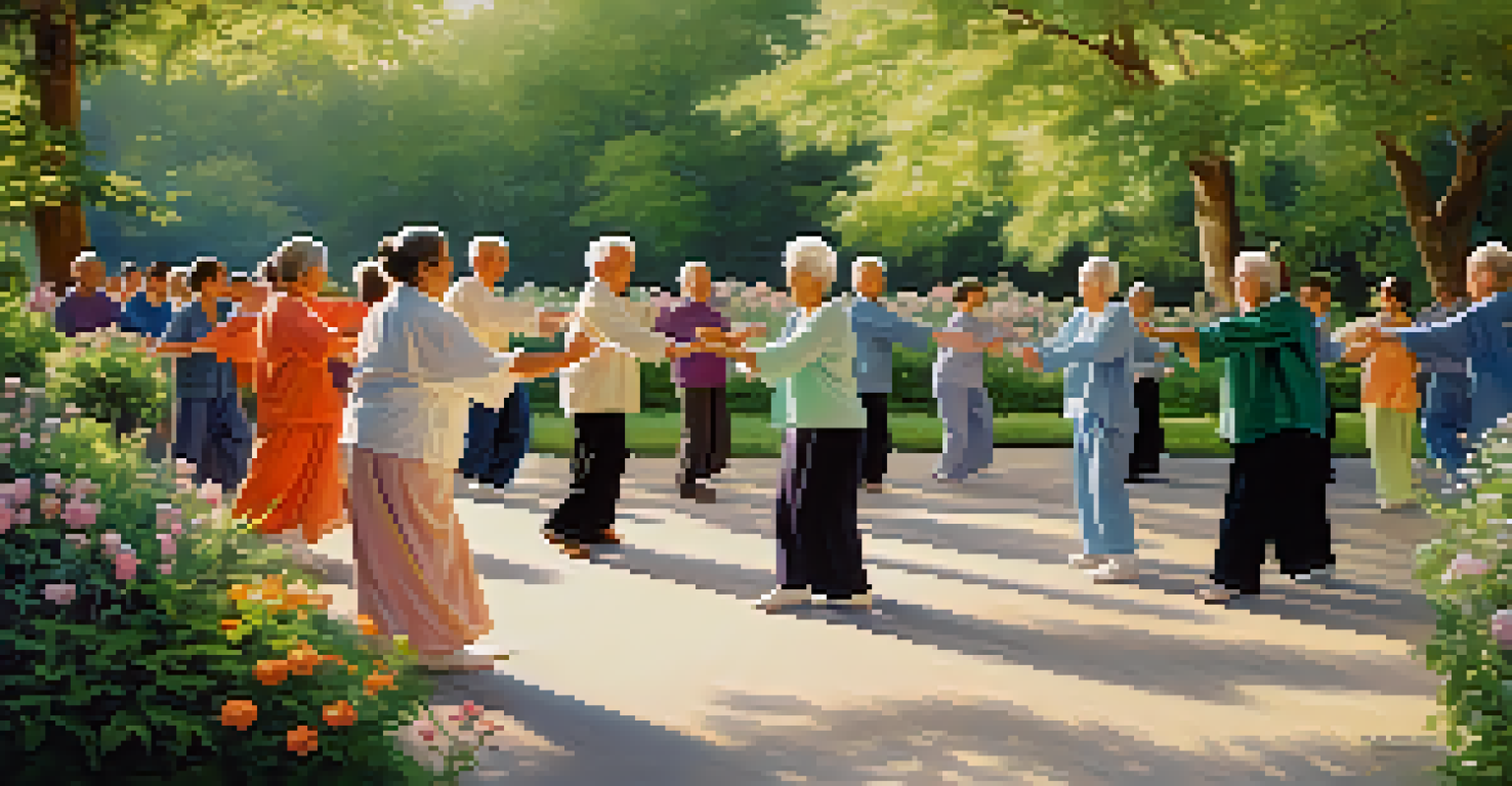Memory Retention in Older Adults: The Power of Dance

Understanding Memory Retention in Older Adults
As we age, memory retention can become a concern for many older adults. This decline in memory can be attributed to various factors, including changes in brain structure and function. However, understanding how memory works can empower individuals to take proactive steps to maintain their cognitive health.
Dance is the hidden language of the soul.
Memory is not just about storing information; it involves complex processes such as encoding, storage, and retrieval. Aging can affect these processes, making it harder to remember names, faces, or even recent events. Yet, recognizing these changes is the first step in combating memory decline, allowing seniors to seek activities that promote cognitive function.
One of the most effective activities for enhancing memory retention is dance. The combination of physical movement, social interaction, and rhythm engages multiple areas of the brain, creating a powerful tool for mental sharpness.
The Science Behind Dance and Memory
Research indicates that physical activity, particularly dance, can significantly boost brain health. Dance engages both the body and mind, requiring coordination, rhythm, and memory—elements that stimulate brain activity. This holistic engagement is vital for older adults as it fosters neural connections and improves overall cognitive function.

When older adults dance, they not only improve their physical fitness but also enhance their memory capabilities. Studies have shown that those who participate in regular dance classes experience less cognitive decline compared to their sedentary peers. This suggests that dance can be an enjoyable way to protect the brain from age-related memory loss.
Dance Boosts Memory in Seniors
Engaging in dance enhances memory retention and cognitive function in older adults through physical movement and social interaction.
Moreover, the social aspect of dance cannot be overlooked. Interacting with others while dancing encourages emotional well-being, which is closely linked to cognitive health. This dual benefit makes dance a unique and effective approach to maintaining memory in older adults.
Types of Dance That Benefit Memory Retention
There are various styles of dance that can enhance memory retention for older adults. From ballroom dancing to line dancing, each style offers a unique set of movements and rhythms that challenge the brain. The key is to choose a style that appeals to individual preferences, ensuring engagement and enjoyment.
Memory is the treasure house of the mind wherein the monuments thereof are kept and preserved.
Social dances, such as salsa or swing, provide not only physical challenges but also opportunities for social interaction, which is crucial for mental health. These dances require participants to remember steps and patterns, which exercises the memory muscles and leads to improved cognitive function.
Even simple forms of dance, like folk dancing or gentle Tai Chi-inspired movements, can be beneficial. The focus on coordination and memory in these dances can help older adults feel more connected to their bodies, fostering a sense of accomplishment and boosting their confidence.
The Emotional Benefits of Dance for Older Adults
Beyond memory retention, dance brings emotional benefits that are equally important for older adults. Engaging in dance can elevate mood and reduce feelings of loneliness and depression, which are common among seniors. This emotional uplift can create a positive feedback loop, further enhancing cognitive function.
Dancing promotes the release of endorphins, the body’s natural feel-good hormones. This chemical boost can lead to improved mental clarity and focus, making it easier for older adults to engage in other memory-enhancing activities. When individuals feel good, they are more likely to participate in social gatherings and cognitive exercises.
Emotional Benefits of Dancing
Dancing not only uplifts mood and reduces loneliness but also fosters emotional well-being, which is crucial for cognitive health.
Additionally, dance can serve as a nostalgic activity, reminding older adults of joyful moments from their past. This connection to personal history can trigger memories and stories, strengthening their sense of identity and belonging.
Creating a Dance-Friendly Environment
To reap the benefits of dance, creating a welcoming environment is essential. This could be as simple as setting up a dance space at home or joining a local dance class. The key is to ensure that the space is safe, encouraging movement while minimizing the risk of falls or injuries.
Incorporating familiar music can also enhance the experience. Music has a powerful ability to evoke memories, and when combined with movement, it can create a joyful atmosphere that encourages participation. Consider exploring different genres to find what resonates best with the individual.
Additionally, partnering with community centers or local organizations to find dance classes can foster social connections. Being part of a group not only makes dancing more enjoyable but also provides the social interactions that are vital for emotional well-being.
Dance as a Tool for Cognitive Training
Dance can be viewed as a form of cognitive training, where learning new steps and routines challenges the brain. This mental engagement is akin to solving puzzles or playing memory games, both of which are known to promote cognitive health. By actively learning, older adults can keep their minds sharp.
Participating in dance classes often involves memorizing sequences, which exercises the brain's ability to retain and recall information. This repetitive practice reinforces memory pathways, making it easier to retrieve information later. The more complex the dance, the greater the cognitive challenge, providing a fun way to stay mentally engaged.
Creating a Safe Dance Environment
Establishing a welcoming and safe space for dancing can encourage older adults to participate and reap the mental and physical benefits.
Moreover, as participants progress in their dancing, they build confidence in their abilities. This sense of achievement can encourage them to tackle other cognitive challenges in daily life, further promoting overall memory retention.
Getting Started with Dance: Tips for Older Adults
If you're an older adult looking to start dancing, begin by exploring local classes or online tutorials. Look for beginner-friendly options that cater to your interests, whether it's ballroom, hip-hop, or even simple line dancing. The important thing is to find a style that excites you and feels comfortable.
It’s also beneficial to invite friends or family to join you. Dancing with loved ones can enhance the experience and provide motivation to keep moving. Plus, the social aspect can make the learning process more enjoyable and less intimidating.

Lastly, remember to listen to your body and take breaks as needed. Dance should be a joyful experience, so focus on having fun rather than mastering every step. Celebrate your progress, no matter how small, and enjoy the numerous benefits that come with moving to the rhythm of life.